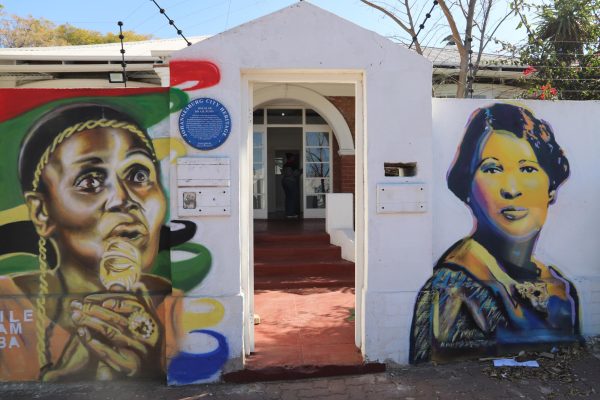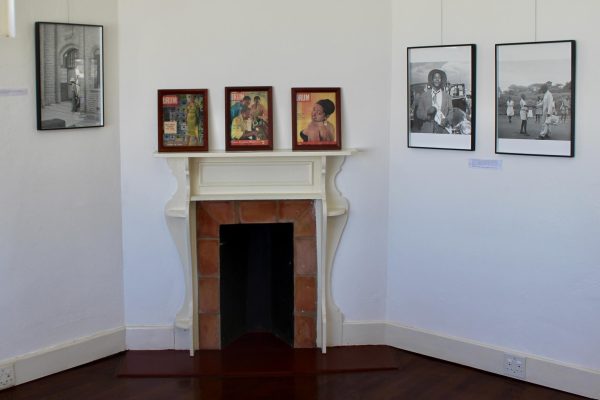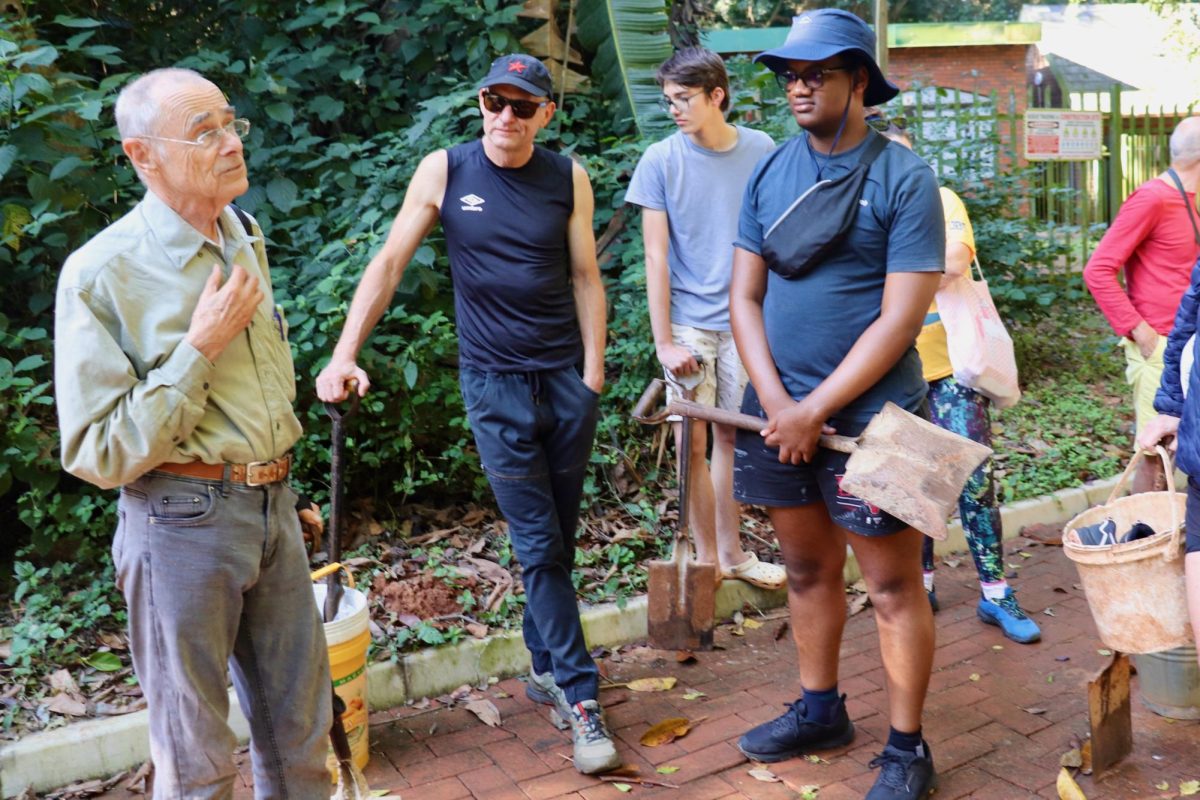Sophiatown, South Africa – Behind a white cement wall splashed with a colorful mural, a brick house on Toby Street in the Johannesburg suburb of Sophiatown tells the story of resilience.
The house, which once belonged to one of the first Black physicians in South Africa to earn a medical degree, Dr. AB Xuma, and his wife, Madie Hall Xuma, is one of only two structures that remains in Sophiatown after the apartheid government destroyed the town in the 1950s. The other is Christ the King Anglican Church on Ray Street.
In February 1955, the government evicted over 60,000 residents of the thriving multi-racial neighborhood and razed their homes and businesses in order to create a new whites-only town. They named it “Triomf,” meaning Triumph in Afrikaans. The town’s original name was reinstated in 2006, 11 years after the fall of apartheid.
Today, the Xuma house, which opened as a museum in 2008, is part of the Sophiatown Heritage Centre. Purchased by the city of Johannesburg in 1997 and named a cultural heritage site in 1998, the once thriving culture space was devastated by the covid-19 pandemic, which severely reduced foot traffic and eliminated options for events.
“Because of covid, we had to shut down a lot of the visual initiatives,” said Jodi Lawerence, a Sophiatown resident and museum administrator who leads visitors on a tour of the museum’s rooms. “Before, we used to have lots of jazz concerts, lots of theater performances hosted in the center and lots of tours leading through the museum. Then, 2020-2021 wiped out the entire client base.”

The museum relaunched in March 2024.
“We’ve got new paints, new flooring, all of those types of things,” Lawrence said. “This past March was a very big event. A lot of well-known South African jazz musicians were here because Sophiatown has an interlinked history with jazz.”
One of the rooms in the museum features a red electric guitar surrounded by photos on the walls of some of Sophiatown’s most important jazz musicians, including trumpeter Hugh Masekela. Many famous South African jazz musicians were from Sophiatown, which was considered the center of South Africa’s jazz scene from the 1930s to the 1950s.
Another exhibit features Anglican priest and anti-apartheid activist Trevor Huddleston, who lived and worked in Sophiatown. Huddleston supported residents in the face of the oppressive apartheid government. Next to the Xuma house is the Trevor Huddleston Memorial Center, a community center which opened in 2015.
“The purpose of this organization is to carry out the legacy of Father Trevor Huddleston, who came to South Africa in the early 1950s,” said Violet Mohotloane, program overseer at the Trevor Huddleston Memorial Center. “He was really surprised when he arrived. He saw how people were, living in different places. Everything was just so different. He did not love what he saw and fought against the system at the time, which was the apartheid system.”
The center provides various programs for community enrichment and skills workshops.
“The courses offered include software engineering, salesforce administration and the new AI stuff,” Lawrence said. “Our other youth development course that we offer is G4G [Girls for Girls]. It is a series of six mentorship sessions for young women within the surrounding areas to learn about leadership roles.”
Alongside the reopening, the museum recently launched a new interactive exhibit called Virtual Reality Historic Sophiatown. Created by doctoral student Izak Potgieter and his team, a virtual reality headset allows people to see what Sophiatown looked like before the forced removals in the 1950s.
The project utilized the memories and stories of those who lived in Sophiatown prior to the removals as well as their descendants.
“We only had memory, which happens to be true of a lot of historic sites in the global south of Africa,” Potgieter said. “The real challenge was, how can we turn memory into space? Can I take someone’s memory of their childhood home and create something accurate from those memories that they would recognize as their childhood?”
Potgieter said the process involves collecting more than just sight details.
“You also get the stories attached to it and the memories attached to it,” Potgieter said, “and all the reasons why that site is of significance in the first place through a very personal lens.”

Those stories became the foundation of the project.
“We transcribed everything,” Potgieter said. “We coded everything, and then almost every line in the interview I added who’s speaking, what place are they speaking of, what events they are referring to at that place. We were able to use that to extrapolate a lot of data on what these places might have looked like, as well as the significance of these places.”
While those who attended the March relaunch of the museum were able to use the interactive exhibit, the project now awaits further funding so that it can be permanently installed in the museum.
“The main thing that still needs to fall into place is the funding for the equipment,” Potgeiter said. “We can go with a little bit of funding and get some headsets or we can go with a bit more and we can get a cave system for school groups to walk into.”
In the meantime, visitors can take in the museum’s smaller exhibits and the significance of the house, situated among both returned residents once forced from their homes and those who know little of the history of their neighborhood.
“What I would like you to take away from this museum is that inherent sort of South African spirit of working together, living alongside each other,” Lawrence said, “not just in tolerance but in the understanding of each other. It’s one thing to tolerate another person just because they’re another person on the basis of race. But understanding where that person comes from and how the two of you relate to each other is so much more.”














































